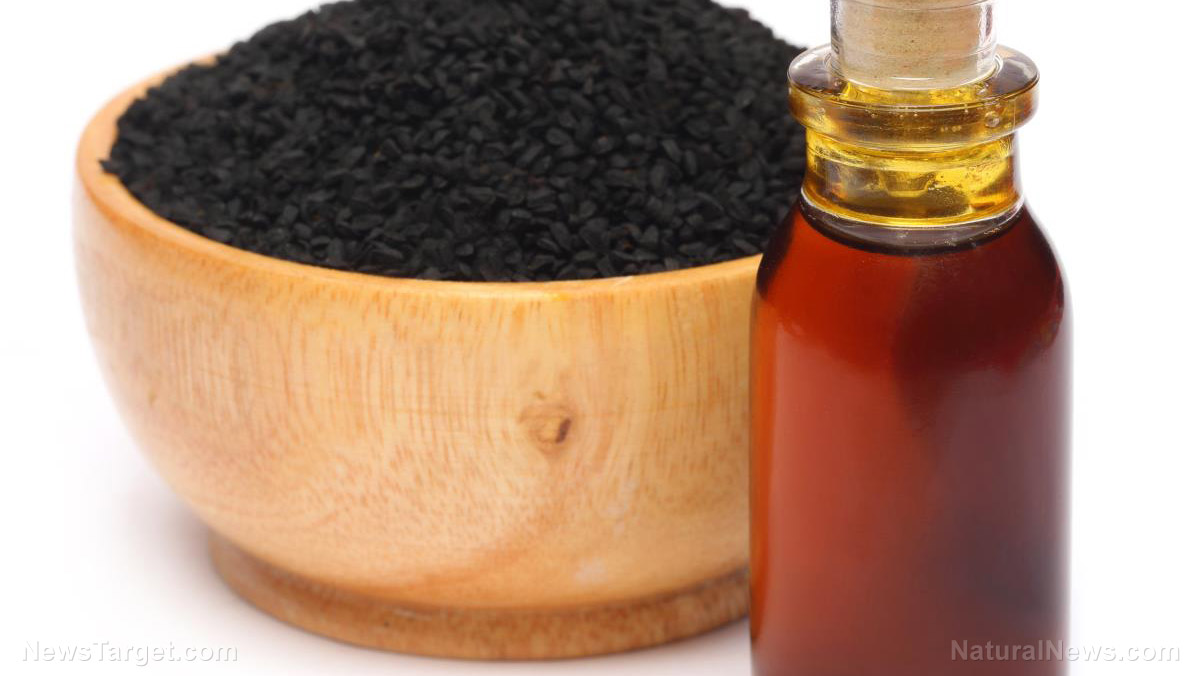Natural remedies: Treating headaches with essential oils
05/22/2023 / By Evangelyn Rodriguez

Headache is one of the most common complaints of patients who seek medical treatment. According to a study published in the American Journal of Medicine, headaches are often benign but could also be a symptom of an underlying condition if they are persistent and last for long periods.
Studies on the cause of headaches have linked them to a variety of life-style related issues, such as poor diet, stress, the use of certain medications and issues that affect the eyes, ears, nose and throat.
A person can experience a headache when any one or a combination of these triggers stimulates pain-sensitive nerve endings called nociceptors, which are found in the skin, muscles, joints, bones and viscera. Once triggered, nociceptors send chemical signals to a part of the brain called the thalamus, which processes all sensory information, including pain sensation.
3 Common types of headaches
According to statistics, almost 90 percent of men and 95 percent of women experience a headache at least once in any given year. The three most common types reported by people are migraine, tension and sinus headaches.
Migraine is a moderate to severe headache characterized by a throbbing pain or pulsing sensation usually on one side of the head. It can be accompanied by vomiting, nausea and extreme sensitivity to light and sound. Although the exact cause of migraine is unknown, researchers believe that it could be caused by changes in the chemicals, nerves and blood vessels in the brain.
Tension headache is the most common type of headache experienced by people. It is described as pain or discomfort in the head, scalp or neck usually caused by muscle tightness. Painful muscle contractions in these areas can be brought about by stress, anxiety, depression or a head injury. Eye strain, fatigue, jaw clenching and excessive caffeine consumption could also trigger tension headaches.
Unlike migraine or tension headache, sinus headache has only one cause: sinus infection. A sinus headache occurs when your sinus passages become congested, causing pressure and pain that can be felt behind and around the eyes, nose, cheeks and forehead. A person suffering from a sinus headache may also feel fatigue as well as an ache in the top jaw. Apart from viral, bacterial or fungal infections, seasonal allergies are the most common triggers of sinus headaches.
Do essential oils work for headaches?
The use of essential oils as natural remedies dates back to the time of the ancient Egyptians, whose perfumes and medicinal ointments contained oils extracted from herbs like aniseed, cedar, frankincense and myrrh. Historical records also show that as early as 3000 B.C., ancient Chinese and Indian healers were using aromatic oils from cinnamon, ginger, myrrh and sandalwood to treat various ailments.
Today, the medicinal properties of essential oils are widely acknowledged and backed by scientific studies. In fact, some essential oils, like lavender, orange and peppermint, are used in clinical settings to help reduce anxiety, foster sleep and support energy levels, immune function and mood. The beneficial effects of essential oils can be credited to their active chemical components, such as the linalool in lavender which promotes relaxation.
Another common use for essential oils is as a home remedy for headaches. For instance, studies show that peppermint essential oil, when used in aromatherapy, can help reduce the dependence of people with headaches on pain medications. The pain-relieving effects of peppermint oil are thanks to menthol, which has been found to activate nociceptors on the skin and then desensitize them. The cooling action of menthol also helps alleviate headache pain.
4 Essential oils that can help relieve headaches
According to studies, there are four essential oils that can greatly help with headaches. You can either inhale these aromatic oils, add them to your bath water, use them to make a cold compress or massage them into your temples. Before applying topically, remember to first dilute your chosen essential oil with a gentle carrier oil, such as coconut oil or jojoba oil.
Lavender essential oil
The oil derived from the purple flowers of the Lavandula angustifolia plant is an excellent remedy for headaches. Besides having mood-stabilizing and antimicrobial properties, lavender essential oil also possesses analgesic properties. In a clinical trial involving patients suffering from migraine, results showed that inhaling lavender essential oil helped reduce the severity of migraine attacks for a majority of the participants.
A more recent clinical trial also reported that therapy using lavender essential oil reduced not just the severity but also the frequency of migraine incidents among the participants. The researchers received no complaints or reports of any side effects during the trial. (Related: Use lavender essential oil to reduce the frequency and severity of migraines.)
Rosemary essential oil
In traditional medicine, the Salvia rosmarinus plant is widely used as a mild analgesic. Its beneficial properties against pain can be traced to potent natural chemicals such as 1,8-cineole, camphor and a-pinene. A study by Serbian researchers found that rosemary essential oil is excellent for pain management and is also a great adjunct to common pain medications.
Meanwhile, a study by Korean researchers found that an oil blend composed of basil, lavender, rosemary and rose essential oil can alleviate headaches and reduce anxiety and stress in middle-aged women.
Peppermint essential oil
The Mentha x piperita plant is a cross between water mint and spearmint, two mint species that contain an abundance of natural analgesic/antinociceptive agents. While water mint contains high amounts of rosmarinic acid and eriocitrin and decent amounts of menthol, spearmint contains limonene and carvone that boast antioxidant and anti-inflammatory activities.
According to a study published in the journal Phytomedicine, the combination of peppermint essential oil and ethanol can reduce sensitivity to headaches, while peppermint oil, when combined with eucalyptus oil and ethanol, can calm the mind, induce muscle relaxation and increase cognitive performance.
Eucalyptus oil
The essential oil derived from eucalyptus leaves, particularly Eucalyptus globulus, is often used in over-the-counter cough and cold medications, thanks to its ability to clear nasal and sinus congestion. This is one of the reasons why eucalyptus oil is also great for relieving sinus headaches. According to studies, oils derived from eucalyptus species that are rich in 1,8-cineole and a-pinene are the best in relieving headaches, as these compounds are known for their analgesic and anti-inflammatory properties.
Essential oils are some of the best natural remedies for minor complaints such as headaches. Studies have shown that when used properly, essential oils can be just as effective as prescription medications, minus any adverse effects. To enjoy the full benefits of essential oils, consult a natural health practitioner before using.
You can learn more about the medicinal uses of essential oils at EssentialOils.news.
Watch the video below to learn more about effective headache remedies.
This video is from the channel AMPNews on Brighteon.com.
More related stories:
4 Essential oils that relieve a sinus headache.
Acupuncture may improve standard treatments for chronic headache.
Tension headache? Hang on a minute, try these quick fixes.
Essential oils that halt headaches.
What are the clinical applications of essential oils?
Sources include:
Submit a correction >>
Tagged Under:
alternative medicine, essential oils, eucalyptus, headaches, herbal medicine, Herbs, Lavender, migraines, natural cures, natural health, natural medicine, pain relief, peppermint, remedies, Rosemary, sinus headache, stress headache, stress relief, tension headaches
This article may contain statements that reflect the opinion of the author
RECENT NEWS & ARTICLES
COPYRIGHT © 2017 REMEDIES NEWS




















